Rechercher
Choisir un de ces critères :
Life Models
When the hills are white with heather
Quatorze plaques de type Life Models traitant du thème amoureux.
En 1907, Bamforth & Co réalisa une série de quatorze vues de type Life Models pour illustrer cette chanson. C'est cette série qui est présentée ici.
Nombre de plaques disponibles pour cette série : 14
- Plaques
- Contexte
Cette histoire reprend l'histoire d'un jeune homme qui quitte son pays, fait fortune et revient y vivre heureux. Les plaques numérotées 2 à 5 illustrent son bonheur avant son départ : il est heureux avec une jeune fille. Parti faire fortune, il découvre une pépite d'or (plaque 6).
Sa chance est faite, il peut annoncer à sa tendre aimée (plaque 7) qu'il va bientôt rentrer enrichi (plaque 8). De retour chez lui, il retrouve le bonheur d'être avec elle (plaques 9 et 10) et décide de l'épouser (plaque 11). Le couple vit alors heureux (plaques 12 et 13).
La plaque numérotée 14 énonce le refrain de la chanson, invitant ainsi le spectateur à chanter.
D'après la chanson populaire composée en 1907 par Alfred Glover et Walter Tewson. Cette chanson se réfère à Annie Laurie, une des grandes figures populaires irlandaises.

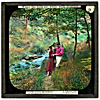
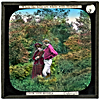

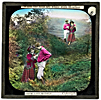
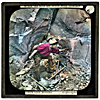
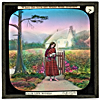

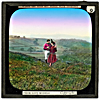


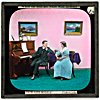

![[14.] Words of Chorus](images/collections/PLM-00043/100/PLM-00043-014.jpg)